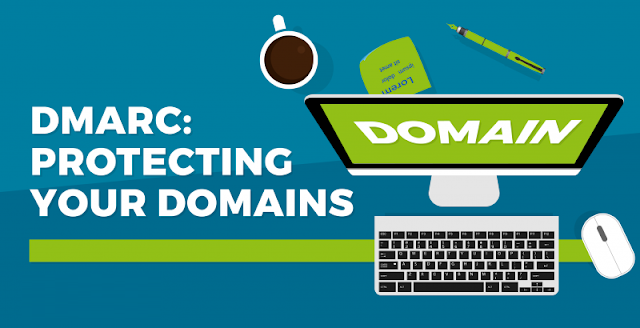DMARC Services
Have you read about DMARC?
Last week, a group of several of the biggest email company (Gmail, Yahoo, AOL), together with companies like Facebook and also Paypal, jointly introduced the release of a new technique of e-mail authentication. The new standard, called DMARC, is a way for e-mail senders as well as receivers to better interact to boost e-mail safety by securing email recipients from harmful phishing strikes and also domain name spoofing.
Just how does it work?
Basically, e-mail senders can now publish a DMARC record that suggests
1. which authentication examinations they have in area (i.e. DKIM, SPF) as well as
2. what action the email company ought to undertake when an incoming e-mail stops working these tests (i.e. spam folder or straight-out being rejected).
This gives the mailbox company with greater assurance regarding the beginning and identity of messages, thus taking the uncertainty out of filtering system inbound email. The mailbox service provider sends a record back to the e-mail sender consisting of details about all incoming emails claiming to be from that sender, and also whether or not they were in fact delivered to receivers.
What are the implications for Kenscio clients?
There are no immediate effects for clients that do not yet have a DMARC record in place. However, given the size and also relevance of the gamers associated with the growth of this standard (Gmail! Facebook!), its consequences on the email industry are most likely to be of growing importance.
The new common supplies many clear benefits, particularly for Kenscio clients where information safety is a high priority, such as financial institutions. However, essentially any type of business can take advantage of releasing a DMARC document, if for nothing else factor than to get the DMARC records, which offer exposure and also info concerning a domain's email and any prospective verification concerns.
We are presently beta-testing this with selected client systems, to obtain a far better understanding concerning the impact this has. Likewise note, there are some circumstances in which it will certainly not be possible to sustain DMARC (multi-domain systems, in some cases individualized from-addresses).
What is DMARC?
DMARC stands for Domain-based Message Verification, Reporting, as well as Correspondence. DMARC is a brand-new technical spec that was created in order to help in reducing e-mail misuse, especially Phishing attacks. DMARC systematizes how e-mail receivers carry out email authentication using the existing SPF and also DKIM mechanisms.
When a sender publishes a DMARC plan, the sender clearly indicates to the mail box carrier whether the sender's emails are secured by SPF and/or DKIM. The sender also specifically tells the mail box supplier what to do if an inbound e-mail stops working the SPF and DKIM verification tests-- i.e. obstruct the message or divert it to the spam folder. The mail box provider no more needs to guess how to reply to incoming mail that stops working verification tests, due to the fact that DMARC clearly informs the mail box service provider exactly how to handle such messages. In addition, the mail box provider can report back to the e-mail sender about whether inbound e-mails pass or fail the assessment process.
As a result of DMARC, e-mail senders will experience regular authentication results for their messages at AOL, Gmail, Hotmail, Yahoo! as well as any other e-mail receiver implementing DMARC
Exactly how does it function?
A DMARC policy for a certain sender is published in the DNS as message (TXT) source records (RR).
When the mailbox company receives an incoming mail, it checks the results of the SPF as well as DKIM examinations. It also accesses the DMARC policy for that sender. This plan defines what an email receiver need to finish with incoming mail when that mail does not pass the SPF as well as DKIM examinations.
If the mailbox supplier determines that the outcomes of the SPF and also DKIM verification examinations do not represent the requirements of the released DMARC, it either denies the incoming message or classify it as spam, depending on the guidelines of the sender as specified in the DMARC. In DMARC terms, this is referred to as a "non-aligned" e-mail.
The mailbox carrier reports back to the email sender regarding all non-aligned incoming emails.
Making Use Of DMARC:
If you have an interest in developing as well as releasing a DMARC policy for your Kenscio's eC-m system, please call your Kenscio agent. The DMARC Service plan for your system will be developed along with our team of dedicated, internal deliverability experts.
The fundamental actions for establishing a DMARC procedure for your system are:
1. It is first required to have DKIM and/or SPF policies in position!
2. Release a DMARC document showing which policies you utilize and requesting reports from mailbox carrier.
3. Assess the information as well as modify your mail streams as suitable.
4. Gradually modify your DMARC policy flags from "display" to "quarantine" to "deny" to enhance control.


DMARC in GoDMARC stands for Domain-based Message Authentication, Reporting & Conformance, which is one of the best security software that prevents email phishing by blocking unauthorized emails before they can reach your company, its employees, consumers, partners and so on. GoDMARC Dashboard helps you identify and whitelist promotional or transactional email senders. Being one of the best email software, GoDMARC allows you to optimize your campaigns and projects so that you deliver exactly what you want. Https://GoDMARC.com
ReplyDelete